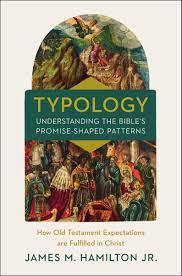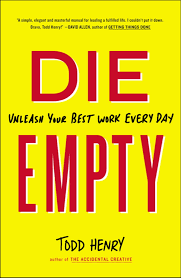
Here are some mini-reviews of four books I read in the last half of 2022. But first, a humorous adage from Groucho Marx:
I find television very educating. Every time somebody turns on the set, I go into the other room and read a book.
Now to business.
I make notes as I read a book, then when I finish, I write the review while it is fresh in my mind. This year the reviews grew in length, which was a problem. So here’s what I did.
I selected four of the books and their reviews—BUT these reviews are more summaries of the books, which I hope you find helpful.
Typology: Understanding the Bible’s Promise-Shaped Patterns by James M. Hamilton (2022)

Biblical types and typology are often abused or disdained. James Hamilton (H.) provides a biblical, well-reasoned, and illustrated text for understanding and using types intelligently and profitably.
H. defines typology as “God-ordained, author-intended historical correspondence and escalation in significance between people, events, and institutions across the Bible’s redemptive-historical story (i.e., covenantal context)” (26).
The author’s working hypothesis is “that later biblical authors learned the literary strategies employed by Moses and imitated his methodology” (332). This hypothesis encourages me to spend more time in the opening chapters of Genesis—in particular, Genesis 1-11—as the platform for reading and understanding the whole biblical text (a point confirmed by the next book in this post).
Generally, types have two main features: (1) historical and/or linguistic correspondence and (2) escalation in significance (19). For example, David is a biblical type of Jesus Christ (the antitype). There is a correspondence between elements of David’s life and Jesus, which are escalated in significance in Jesus’ life (e.g., king => KING).
(1) As to historical correspondence, David looked back to God’s chosen, such as Joseph, Moses, and others, who were attested by God’s favor and blessing, and opposed and persecuted by the “seed of the serpent.” Looking forward, David also speaks of his experience in the same terms of God’s favor and Satanic opposition, and affirms his faith in God’s promises to his “seed” or descendants (186f.).
(2) As for escalation in significance, “the experience of Jesus goes beyond and thereby fulfills that of David” in numerous ways, as Peter explains in Acts 2:29-33, drawing on David’s Psalm 16. These ways include:
- the Lord’s presence with David, which presence is transcended with Jesus;
- David was kept from death against persecution, and Jesus was kept from death through resurrection;
- David’s tomb remains, and Jesus has been raised (190f.).
Note in each of the bullet points the correspondence or similar pattern and the escalation or increase of significance. For instance, both David and Jesus died (correspondence), but David’s body is still in a tomb while Jesus has been resurrected out from a tomb.
H. explains typology on the micro and macro levels (chapters 1 and 11). He then demonstrates typology in persons such as Adam, priests, prophets, kings, and the righteous sufferer (chapters 2-6) and in events such as creation, Exodus, the rituals of Leviticus, and marriage (chapters 7-10).
This study wonderfully demonstrates the interconnectedness of the whole canon of Scripture—Old and New Testaments. I was challenged and excited by new discoveries of interconnectedness in every chapter.
Typology is a book well-worth reading as a rich resource for teaching us how to read and understand the Bible better on its own terms. I will be reading it again.
You can purchase this book using this Amazon affiliate link.
Rethinking Genesis 1-11: Gateway to the Bible by Gordon J. Wenham (2015)
This short book (86 pages) is the substance of the 2013 Didsbury Lectures. Gordon Wenham is also the author of a well-received two-volume commentary on Genesis.
Wenham proposes that “Genesis 1-11 can provide us with the theological spectacles with which to read the Bible both sympathetically and appropriately.” He then examines 1:1-2:3, showing the patterns for reading the rest of Genesis—if not the whole Bible.
The author demonstrates the parallels between the Creation account and the Flood account, between Adam and Noah as the second Adam. Ultimately, Jesus Christ is the “last Adam” (1 Corinthians 15:45).
In the epilogue, Wenham shows how a good reading of Genesis 1-11 fits with biblical theology (including the New Testament) and modern science-based models of origins. All-in-all a valuable and readable overview of the first eleven chapters of the Bible.
In addition, Wenham echoes and confirms Hamilton’s book Typology (above).
You can purchase this book using this Amazon affiliate link.
The Flow of the Psalms: Discovering Their Structure and Theology by O. Palmer Robertson (2015)
Do you view the book of Psalms as a hodge-podge collection? As much as you enjoy reading, praying, and singing the Psalms, there is no apparent structure or progression in the collection.
Robertson’s book is a recent endeavor to identify the structure and theological progression of the book of Psalms. It is a given that the book is divided into five sections or “books.” In the early chapters, Robertson explores the structural elements of the psalms from various perspectives, including the recognized categories of Messianic, ascent, acrostic, and so forth. He then identifies various patterns emerging from his analysis.
Generally, his conclusion as to its structure is:
Book 1 (Psalms 1-41): Confrontation – the messianic king (ultimately, this king is Jesus Christ) struggles with numerous enemies opposed to the Kingdom of God.
Book 2 (Psalms 42-72): Communication – of the king with the peoples of other “nations.”
Book 3 (Psalms 73-89): Devastation – by invading nations because of the sin of God’s people and their lack of trust in him.
Book 4 (Psalms 90-106): Maturation – in the perspective of God’s people toward the promises of the Davidic covenant.
Book 5 (Psalms 107-150): Consummation – the climactic praises of the kingdom.
The book is well-researched and written, although challenging at times. There is a wealth of insights that will enrich your reading of the Psalms.
As for the structure, it appears quite intricate and complex, and I am left with the sense that it continues to elude our grasp.
I will get even more from this book when I re-read it.
You can purchase this book using this Amazon affiliate link.
Die Empty: Unleash Your Best Work Every Day by Todd Henry (2015)

George Bernard Shaw once wrote, “I want to be thoroughly used up when I die.” This was not a wish to die but a desire to live more fully.
Here is how the author describes the purpose of Die Empty:
This book is about cultivating the mindset and the methods you need to unleash your best work each day, and to increase the odds that, at the end of your life, you will not regret how you spent your days. (4)
This book surprised me in many helpful ways—especially when I pondered it in the context of Psalm 90.
You can purchase this book using this Amazon affiliate link.
Do you have a title that you recommend I read this year? Use this link to send me the details.
FORWARD TO the next book review blog
BACK TO the previous book review blog
Photo credit: for the blog post, unknown. The covers of the respective titles reviewed are from the publishers.
Click "yes" to receive resource-rich newsletters.
Helpful resources provided to 'living theology' subscribers.
YES!
